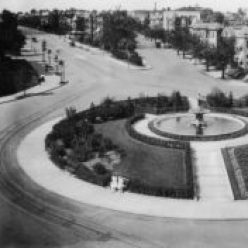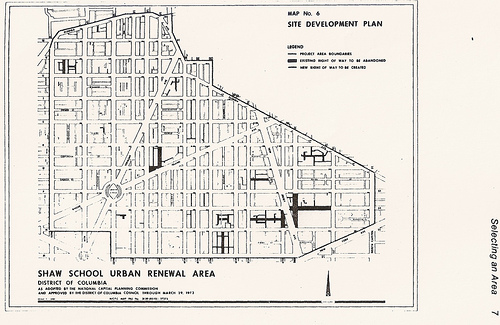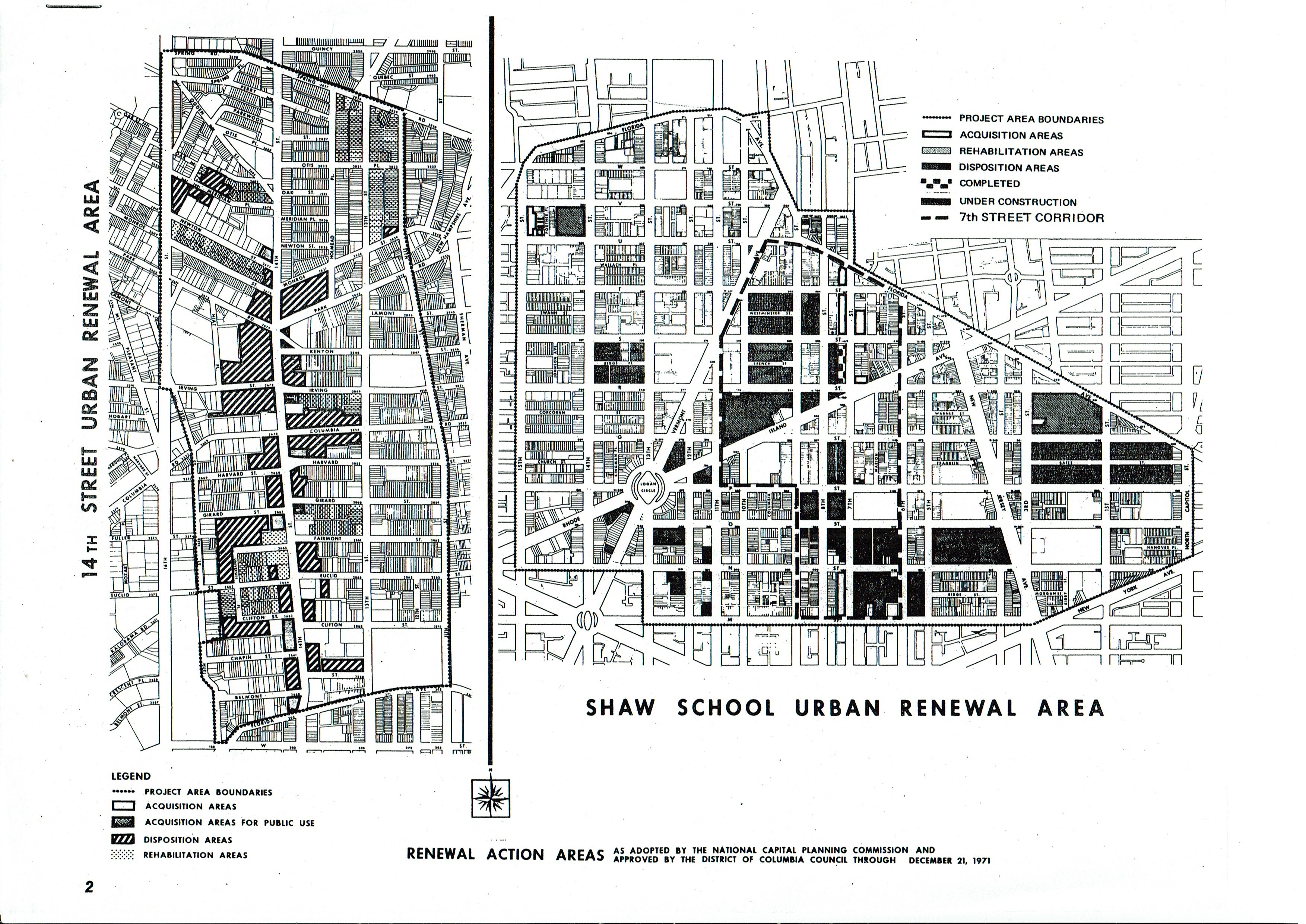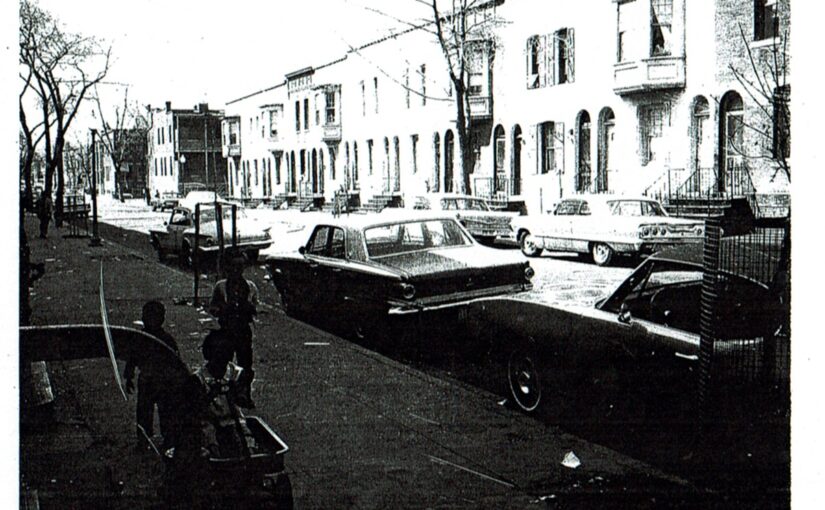Everyso often people argue about the boundaries of the Shaw neighborhood. Here’s a map from 1971 from the National Capital Planning Commission. It also shows the 14th St Urban Renewal Area, but little matter.
Tag: neighborhood history
Redeux-WSIC-1950 Sell Off- 137 Bates Street NW
This is an update of a previous post.
The Washington Sanitary Improvement Company (WSIC) was a late 19th century charitable capitalism experiment that ended in the 1950s. This blog started looking at the homes that were supposed to be sold to African American home buyers, after decades of mainly renting to white tenants.
Looking at WSIC properties they tend to have a pattern where the properties were sold to a three business partners, Nathaniel J. Taube, Nathan Levin and James B. Evans as the Colonial Investment Co. for $3 million dollars. Those partners sold to African American buyers. There was usually a foreclosure. Then the property wound up in the hands of George Basiliko and or the DC Redevelopment Land Agency (RLA). Then there were the odd lucky ones who managed to avoid that fate.
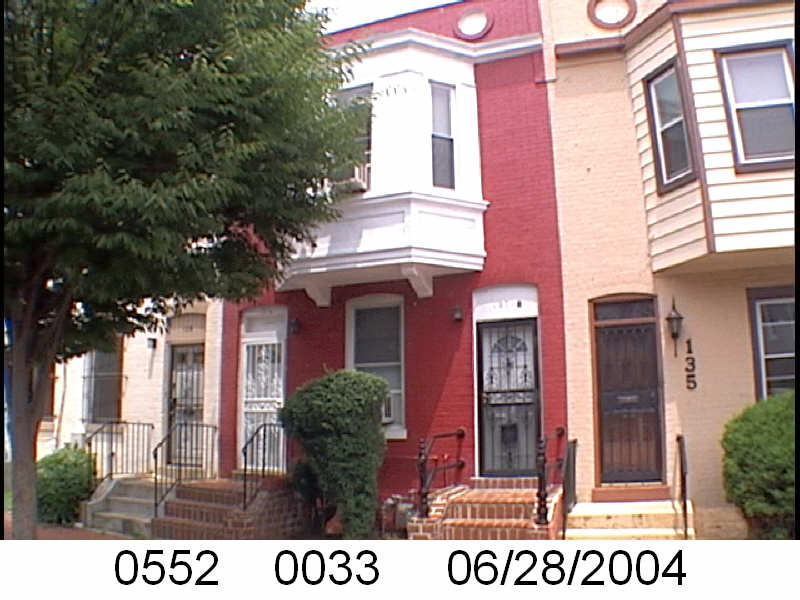
Let’s see 137 Bates’ property history:
- January 1951 Evans, Levin and Taube sold the whole of 137 Bates St NW to two couples, George A. and his wife Gladys L. Watson, along with Clayton and wife Lizzie M. Williams.
- January 1951 the Watsons and the Williams borrowed $5,050 from the Colonial Inv. Co’s preferred lenders, trustees Abraham H. Levin and Robert G. Weightman.
- February 1963 the Watsons and the Williams were released from their mortgage.
- August 1963, through an intermediaries Barbara and Robert Drake, the Watsons and the Williams placed the property solely in the Williams’ name.
- March 1964 the Williams borrowed $5,000 from Republic Savings & Loan, later the Home Federal Savings & Loan Association.
- June 1981 Mrs. Williams borrowed $20,000 from what appears to be the DC Department of Housing & Community Development.
- November 1981 the Williams were released from their 1964 mortgage.
- May 2018 the estate of Lizzie Mae Williams, being that she died July 13, 1997 and Clayton died July 25, 1971, sold by the Estate of Diane Alexander, which was represented by Alisia Alexander sold 137 Bates to Leben Holdings LLC for $805,500.
For information about the Watsons and the Williams, see the earlier post. But this transaction seemed to work for everyone. There were no foreclosures and the property stayed in the hands of one of the families (I could not find a connection between the Watsons & Williams).
Redeux-WSIC Sell Off- 127 Bates Street NW
This is an update of a previous post published last year.
So I thought this was a WSIC house. It wasn’t built as one. However, it was sold as one.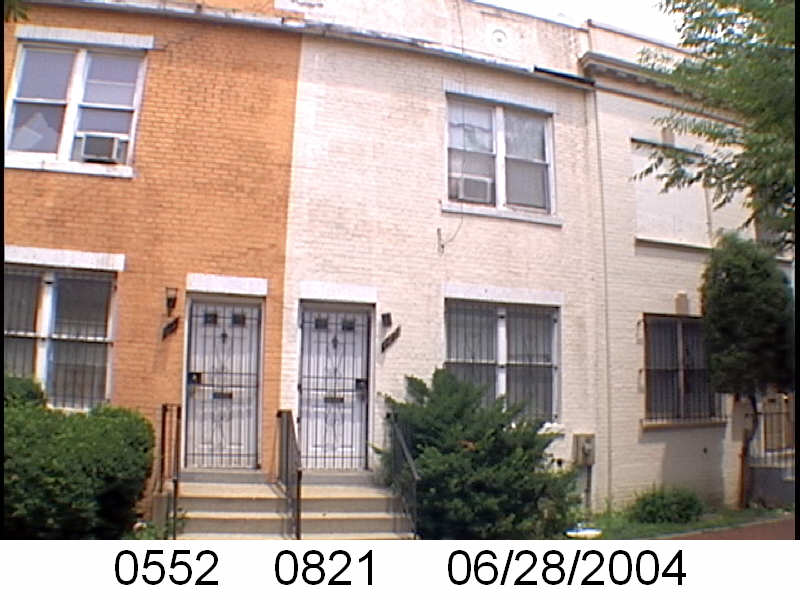 From the picture above of 127 Bates from 2004, the lot number is 0821. The land records for that lot number only goes back to 2013. So to the 1919 map
From the picture above of 127 Bates from 2004, the lot number is 0821. The land records for that lot number only goes back to 2013. So to the 1919 map

127 Bates Street NW appears to have been Lot 804. The record for that lot end in 1929. That’s the year the house was built, well after the majority of WSIC TC houses were erected.
Working on the house history of 129 Bates Street NW, it was sold as a fourplex. However, the current structure doesn’t look like a former 4 unit property. But if you combine it with 127, it does. So lets go with that. For that history check out the link above for 129 Bates.
The summary, if assuming 127-129 Bates was one, there were 3 foreclosures. It was sold to DC RLA who then sold it to the Bates Street Associates.
Redeux-WSIC-1950 Sell Off- 129 Bates Street NW
This is a redo of a previous post to add a little bit of more info.
The Washington Sanitary Improvement Company (WSIC) was a late 19th century charitable capitalism experiment that ended in the 1950s. This blog started looking at the homes that were supposed to be sold to African American home buyers, after decades of mainly renting to white tenants.
Looking at WSIC properties they tend to have a pattern where the properties were sold to a three business partners, Nathaniel J. Taube, Nathan Levin and James B. Evans as the Colonial Investment Co. for $3 million dollars. Those partners sold to African American buyers. There was usually a foreclosure. In 1956 Nathan Levin died and Colonial Investment Company vice president Harry A. Badt took his place in the foreclosure paperwork. Then the property wound up in the hands of George Basiliko and or the DC Redevelopment Land Agency (RLA). Then there were the odd lucky ones who managed to avoid that fate.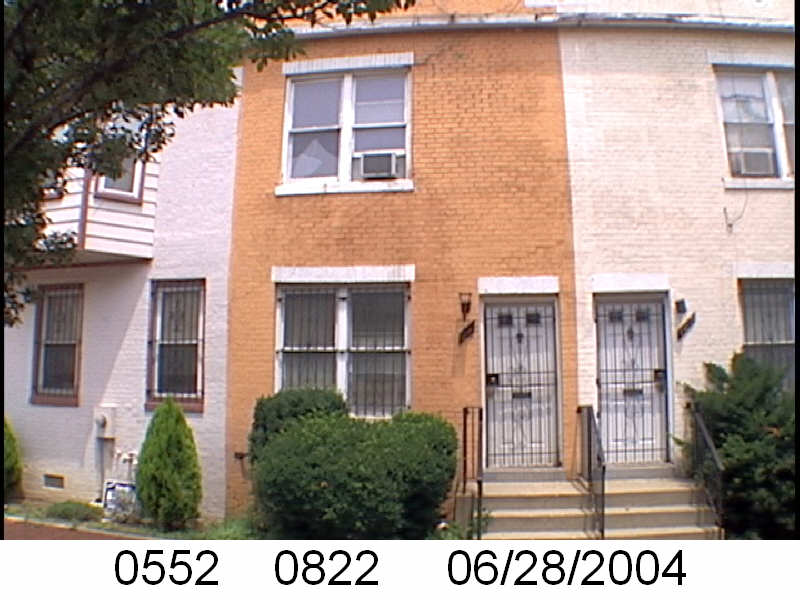
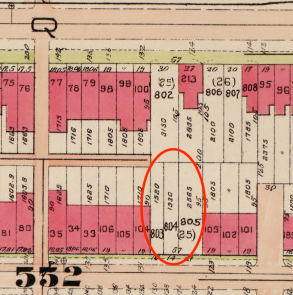
First, the lot number 822 doesn’t work. Looking at maps 129 Bates fits on lots 819 & 820, formerly of lot 25. So this examination will look at sales for lots 819/820 combined.
The last time I tried this, titles were too messy for me to do a decent tracking for this address and I gave up. I’ll make another stab at it.
Let’s see what happens with 129 Bates St NW:
- March 1951 Evans, Levin and Taube sold 1/4 of the unit to Harold J. and Margaret A. Price.
- March 1951 the Prices borrowed $3,700 from Colonial Investment Co. favorite trustees Abraham H. Levin and Robert G. Weightman.
- May 1951 Evans, Levin and Taube sold 1/4 of 129 Bates to Elsie M. and James W. Horton.
- May 1951 the Hortons borrowed $3,650 from trustees Levin and Taube.
- May 1951 Evans, Levin and Taube sold 1/4 of the property to Doris E. and Thomas H. Brown Jr.
- May 1951 the Browns borrowed $3,650 from Levin and Weightman.
- June 1951 Evans, Levin and Taube sold the remaining 1/4 to Marian and Thomas P. Gale.
- June 1951 the Gales borrowed $3,700 from Levin and Weightman.
- July 1951 the Prices sold 1/4 of their property to Charles M. and Mabel C. Bowser.
- June 1953 the Browns lost their quarter to foreclosure, and Evans, Levin and Taube repossessed the property via an auction.
- August 1954, in a large property package Evans, Levin and Taube transferred several foreclosed properties to themselves via an intermediary Lillian M. McGowan. I don’t know why.
- December 1954 the Hortons lost their quarter to foreclosure, and Evans, Levin and Taube repossessed the property via an auction.
- December 1957, the Gales lost their quarter to foreclosure, and Evans, Badt and Taube repossessed the property via an auction.
- December 1957, as part of a larger property package ( doc # 1958019347) Harry and wife Jennie Badt transferred their interests in this and other properties to the survivors of Nathan Levin.
- October 1963, the Prices, and by extension the Bowsers, were released from their mortgage.
- December 1972 James B. and wife Carmen Evans, in a very large property package (doc#1972027675 ) sold their interest to R & R Investments Inc.
- November 1972, James A. Mitchell’s* survivors, Sidney H. and wife Olivia Matthews, along with Harry C. and Gloria Matthews, Nathaniel Taube, and Nathan Levin’s survivors sold their interest in the property to the District of Columbia Redevelopment Land Agency.
- January 1973, R & R Investments sold their interest to the DC Redevelopment Land Agency.
- May 1974 the Board for the Condemnation of Insanitary Buildings decided that 129 Bates Street NW was condemned (doc# 7400013192) and informed the owner, DC RLA.
- June 1975 129 Bates was considered sanitary.
- About 1978 DC RLA transferred/ sold this and other properties to the Bates Street Associates, Inc.
129 Bates does not strike me as a 4 unit property. I’m not sure what happened with the Bowsers. Their quarter was not foreclosed, like the other 3/4th of 129 Bates. Eventually, 129 Bates was owned by the DC RLA and then Bates Street Associates. The slum landlord who usually shows up, did not.
Looking for the deed history of 127 Bates St NW, it is pretty much the same as 129, except it also has lot 782, which only appears once.
*I have not idea who James Mitchell is.
Redeux- WSIC-1950 Sell Off- 15 Bates Street NW
This is a redo of a previous post to add a little bit of more info.
The Washington Sanitary Improvement Company (WSIC) was a late 19th century charitable capitalism experiment that ended in the 1950s. This blog started looking at the homes that were supposed to be sold to African American home buyers, after decades of mainly renting to white tenants.
Looking at WSIC properties they tend to have a pattern where the properties were sold to a three business partners, Nathaniel J. Taube, Nathan Levin and James B. Evans as the Colonial Investment Co. for $3 million dollars. Those partners sold to African American buyers. There was usually a foreclosure. In 1956 Nathan Levin died and Colonial Inv. Co. vice president Harry A. Badt took his place in the foreclosure paperwork. Then the property wound up in the hands of George Basiliko and or the DC Redevelopment Land Agency (RLA). Then there were the odd lucky ones who managed to avoid that fate.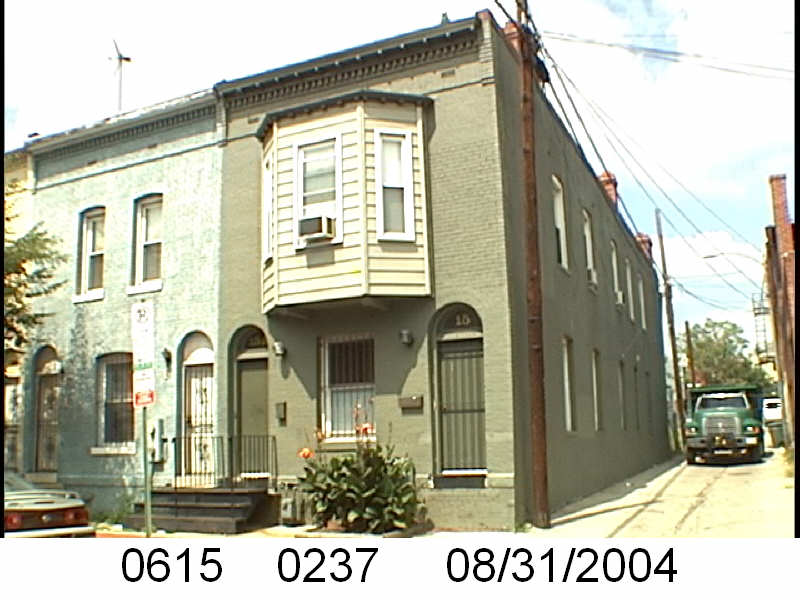
Let’s see what happens with 15 Bates St NW:
- January 1951 Evans, Levin and Taube sold the whole of 15 Bates St NW to Jessie I. Johnson, married and Maude Y. Ryles, widow.
- Jan 1951 Johnson and Ryles borrowed $6,050 from Colonial Investment Co. favorite trustees Abraham H. Levin and Robert G. Weightman.
- July 1963 Ryles and Johnson borrowed $6,600 from the Perpetual Building Association with trustees Junior F. Crowell and Samuel Scrivener Jr.
- October 1963 Ryles and Johnson were released from their Jan 1951 mortgage.
- October 1963 Ryles and Johnson benefited from the release of a loan taken out by Evans, Levin and Taube in November 1950.
- December 1976 Ryles and Johnson sold the property Cleveland R. and Harriette Chambliss.
- May 1990 Harriette, who was Cleveland’s widow and her next husband, George W. Crockett Jr sold the house to Lincoln Jenkins.
- September 1990 Ryles and Johnson were released from their 1963 mortgage…. long after they sold the house.
This appears to work as promised. No foreclosures, no slum lords, no redevelopment agencies.
I found the Maude Ryles lived at 15 Bates Street NW according to the 1954 city directory. The rest of her history, I am not 100% about, but here’s my best shot. She may have been Maude Ann Yancey as a 1961 obit for Mariah H. Yancey mentions Maude Ann Ryles as the stepmother to her and several other girls and the foster mother of George Jordon of New York. So that’s where I guess the Y is for. In the 1950 census she was living at 62 Q St NW, Apt. 2, with a roommate and working as some sort of operator for Veteran’s (Affairs?). She died June 1980 and according to the Social Security Death Index she was born May 13, 1902, however her grave differs saying she was born in 1903.
According to the obit on the Find a Grave site, Jessie Y. Johnson was her sister. So I looked for her in the 1954 city directory and found her at 15 Bates Street NW. It appears she was an examiner for the Bureau of Engraving and Printing. In the 1950 census, she too was living at 62 Q St NW, but Apt 1. She was living with her husband Chester Arthur Johnson and 20 year old daughter Iris.
Redeux- WSIC-1950s Sell Off- 43 Bates Street NW
This is based off a previous blog post for 43 Bates St NW.
The Washington Sanitary Improvement Company (WSIC) was a late 19th century charitable capitalism experiment that ended in the 1950s. This blog started looking at the homes that were supposed to be sold to African American home buyers, after decades of mainly renting to white tenants.
Looking at WSIC properties they tend to have a pattern where the properties were sold to a three business partners, Nathaniel J. Taube, Nathan Levin and James B. Evans as the Colonial Investment Co. for $3 million dollars. Those partners sold to African American buyers. There was usually a foreclosure. In 1956 Nathan Levin died and Colonial Inv. Co. vice president Harry A. Badt took his place in the foreclosure paperwork. Then the property wound up in the hands of George Basiliko and or the DC Redevelopment Land Agency (RLA). Then there were the odd lucky ones who managed to avoid that fate.
The 45 Bates St NW post had some confusion and hopefully in this update I can do a better job.
Let’s see what happen with 43 Bates St NW: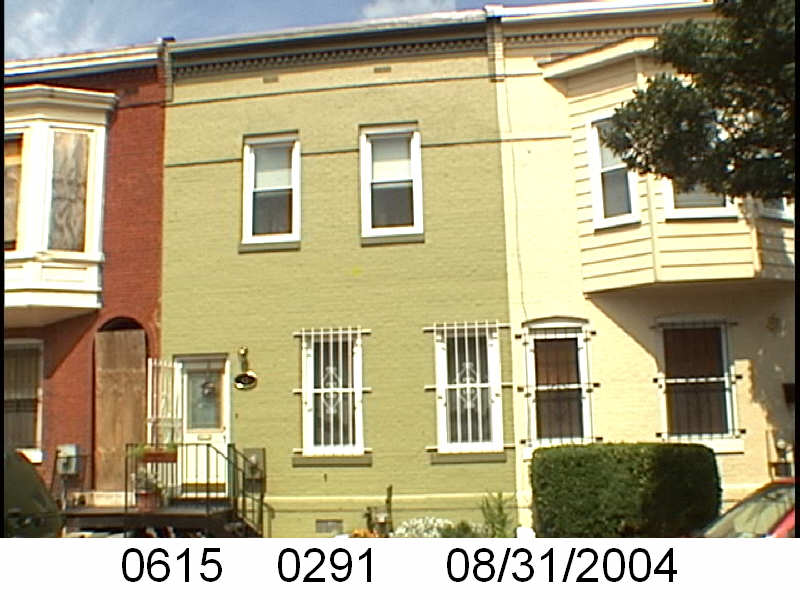
- December 1950 (recorded Jan 26, 1951) Evans, Levin and Taube sold one-half of 43 Bates St NW to Elizabeth and Neal Nelson.
- December 1950 (recorded Jan 18, 1951)the Nelsons borrowed $2,525 from Colonial Investment Co. favorite trustees Abraham H. Levin and Robert G. Weightman.
- January 1951 Evans, Levin, and Taube sold the other half of 43 Bates St NW to Mrs. Irene Brown, James E. Rogers and his wife Perlina Rodgers.
- January 1951 Brown and the Rodgers borrowed $2,525 from trustees Abraham H. Levin and Robert G. Weightman.
- September 1952 Brown and the Rodgers lost their half to foreclosure and through an auction it returned to Evans, Levin and Taube.
- Sept 1952 Evans, Levin and Taube sold the foreclosed half to Bernice and Hickman Leathers.
- September 1952 the Leathers borrowed $3,173.94 from trustees Levin and Weightman.
- March 1954 the Leathers lost their half to foreclosure, and like the last time, Evans, Levin and Taube repossessed it via an auction.
- April 1954 Evans, Levin and Taube resold the foreclosed half to Leotta Francis, Isabell Forde and Rosalie Forde.
- April 1954 Francis and the Fordes borrowed $3,186.77 from trustees Levin and Weightman.
- September 1956 (recorded 3/14/1958) the Nelsons lost their half to foreclosure and ownership went to to Colonial Investment Co partners Harry A. Badt, Evans and Taube, though an auction.
- September 1956 (recorded 8/27/1958, Doc 1958025810) Harry A. Badt and wife Jennie, transferred their interest in 43 Bates and other properties to the survivors of Nathan Levin.
- March 1957 Francis and the Fordes sold their half back to Badt, Evans and Taube.
- March 1959 Francis and the Fordes were released from their mortgage.
- March 1959 (doc# 1959019387) Badt, Evans, Taube, Nathan Levin’s survivors and their spouses sold the whole of 43 Bates St NW and other properties on the block to Sophia and George Basiliko.
- Between 1971-1972 Basiliko was released from several mortgages and the next document has the DC Redevelopment Land Agency (RLA) as the owner, so we are left to assume around 1970 Basiliko sold the property to RLA.
- Around 1978 the DC RLA sold/transferred this and other properties to the Bates Street Associates. A contract (doc #7800024140) DC RLA and Bates Street Associates, Inc suggests the property was transferred around this time.
1968 Map and Key
WSIC-1950s sell off- 45 Bates Street NW-Revised
I need to clean up the data on this old post from 2022. This was before I started noticing a pattern with the WSIC houses. I’m just going to focus on the property history and not the individuals.
From my last post, I mentioned I would look at a property that was transfer from the Washington Sanitary Improvement Company (WSIC) to three men, who then sold it to a person marking the exit of WSIC from Truxton Circle in the 1950s.
 45 Bates St NW is on square 615 in Truxton Circle. During the time of WSIC’s ownership it sat on lot 134. Currently it is now lot 292.
45 Bates St NW is on square 615 in Truxton Circle. During the time of WSIC’s ownership it sat on lot 134. Currently it is now lot 292.
I don’t have the exact date when WSIC came to posses 45 Bates and other homes on the block. In 1903 parties (George Sternberg and George Kober) involved with the Washington Sanitary Improvement Company (WSIC) owned many lots on Sq. 615. So fast forward to June 1950 and the property is transferred from WSIC to the Washington Loan & Trust Company, then from the Washington Loan and Trust Co. to business partners Nathaniel J. Taube, Nathan Levin and James B. Evans. The business partners borrowed $3 million dollars for Investors Diversified Services Inc. of Minnesota.
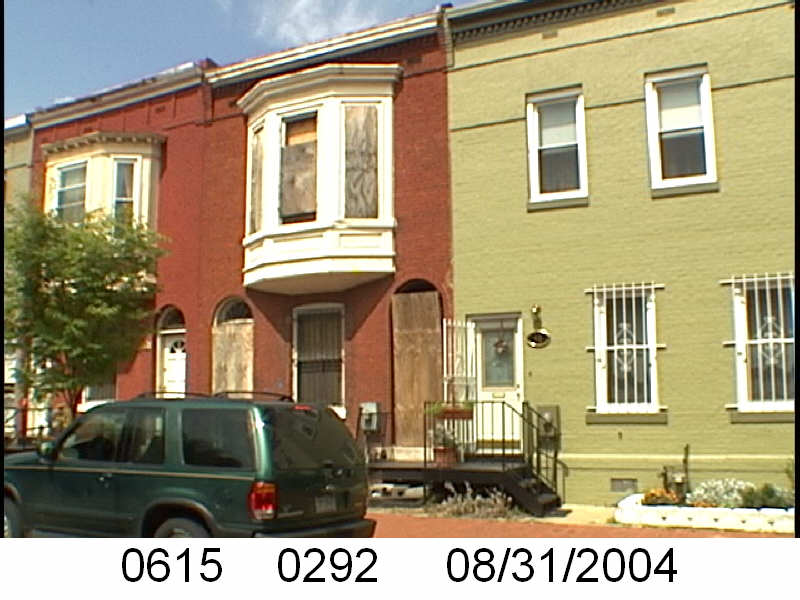
So let’s get onto the property history:
- December 1950 Colonial Investment Co. (represented by James B. Evans, Nathan Levin, and Nathaniel J. Taube) sold half of 45 Bates St NW to Kathleen S. and William W. Johnson.
- December 1950 the Johnsons got a mortgage from (not named) Colonial Mortgage Co.’s trustees, Abraham H. Levin (Nathan‘s brother) and Robert G. Weightman for $2,400.
- December 1950 Evans, Levin and Taube sold the other half of 45 Bates to George M. and Olivia V. Davis.
- December 1950 Mr. and Mrs. Davis borrowed $2,400 from Levin and Weightman.
- October 1961 the Davis household was released from their mortgage.
- December 1961 the Johnsons were released from their mortgage.
- July 1970 Kathleen transferred the property to William W. who in the next document transferred it to Florence Ann Johnson.
- 1970-2013 lots of stuff happened that I don’t care about.
- December, Friday the 13th, 2013 Olivia V. Davis Estate, apparently represented by heir Sterling A. Richardson, who transferred it from the estate to himself.
- January 2014 Richardson sold his 1/2 of 45 Bates to Cameron Properties of DC, Inc.
- 2014-2017 lien drama.
- August 2017, Eric M. Rome, who was representing the estate of Florence A. Johnson-Morrison (who might have died in 2014) and Cameron Properties of DC, Inc, sold the whole property to 45 Bates Street NW LLC.
The Washington Sanitary Improvement Properties
Finally, we have come to the end of the WSIC sell off. If any Truxton Circle properties have been missed, please reach out. A total of 187 properties have been examined.
Below is a map of the properties in bright green.
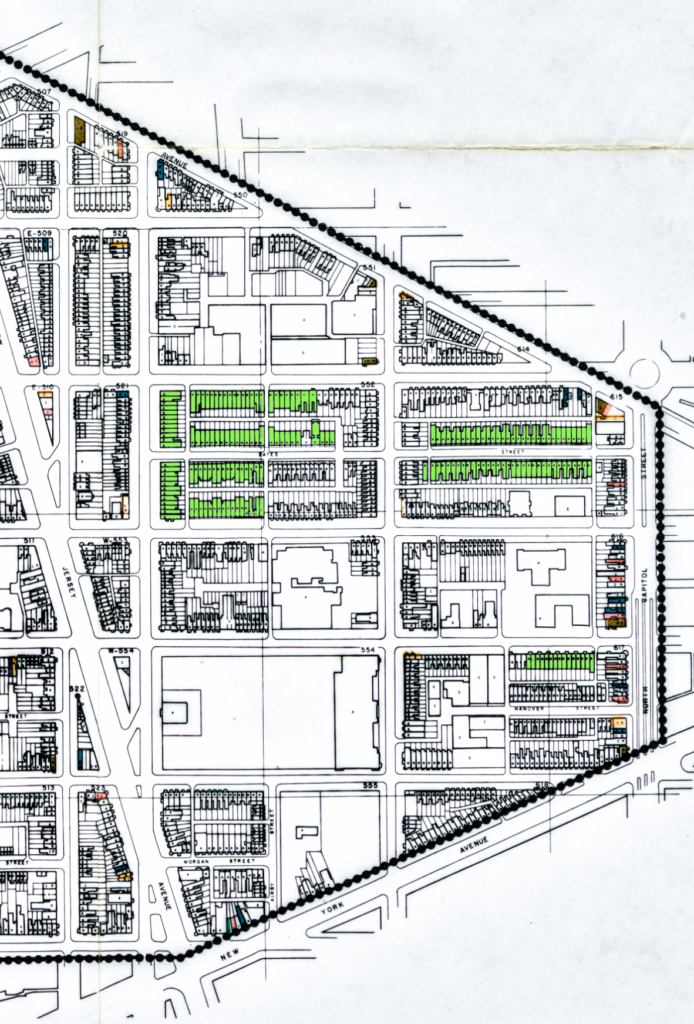 It may seem like a small number of houses, but they are in the heart of the neighborhood and give Truxton Circle one of its distinct architectural features, the 2nd floor bay window.
It may seem like a small number of houses, but they are in the heart of the neighborhood and give Truxton Circle one of its distinct architectural features, the 2nd floor bay window.
WSIC-1950 Sell Off- 64 Bates Street NW
In lieu of a February Black History post, WSIC continues, because it is Black History.
The Washington Sanitary Improvement Company (WSIC) was a late 19th century charitable capitalism experiment that ended in the 1950s. This blog started looking at the homes that were supposed to be sold to African American home buyers, after decades of mainly renting to white tenants.
Looking at WSIC properties they tend to have a pattern where the properties were sold to a three business partners, Nathaniel J. Taube, Nathan Levin and James B. Evans as the Colonial Investment Co. for $3 million dollars. Those partners sold to African American buyers. There was usually a foreclosure. In 1956 Nathan Levin died and Colonial Inv. Co. vice president Harry A. Badt took his place in the foreclosure paperwork. Then the property wound up in the hands of George Basiliko and or the DC Redevelopment Land Agency (RLA). Then there were the odd lucky ones who managed to avoid that fate.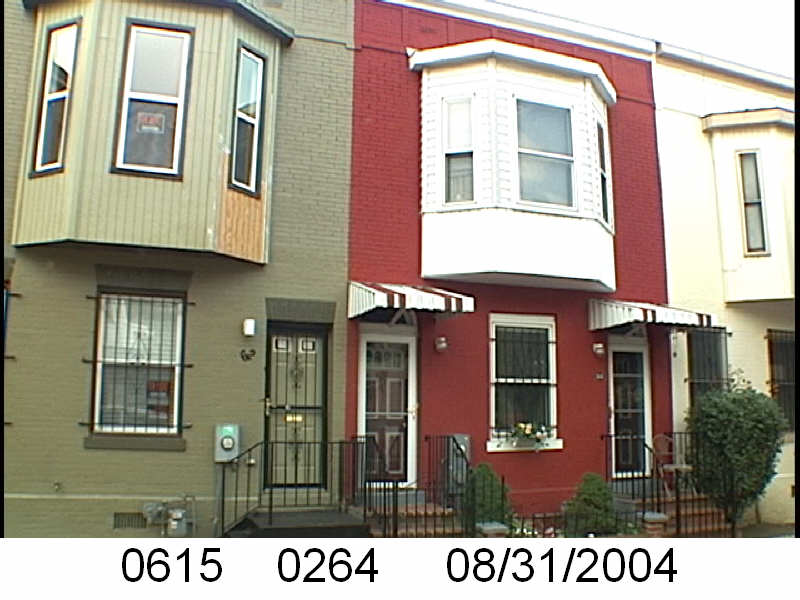
Let’s see what happens with 64 Bates St NW:
- December 1950 (recorded Jan 18, 1951) Evans, Levin and Taube sold one-half of 64 Bates St NW to Blanche M. and John W. Thomas.
- December 1950 (recorded Jan 18, 1951) Mr. and Mrs. Thomas borrowed $3,025 from Colonial Investment Co. favorite trustees Abraham H. Levin and Robert G. Weightman.
- December 1950 (recorded Jan 26, 1951) Evans, Levin, and Taube sold the other half of 64 Bates St NW to Charles and Charlotte Harris.
- Dec 1950 Mr. and Mrs. Harris borrowed $3,025 from trustees Abraham H. Levin and Robert G. Weightman.
- February 1955 the Harris lost their half to foreclosure and through an auction it returned to Evans, Levin and Taube.
- November 1961, as part of a large property package (doc 1962000416), Badt, Evans, Taube, Nathan Levin’s survivors and their spouses sold the foreclosed half of 64 Bates St NW to Sophia and George Basiliko.
- February 1963 Mr. and Mrs. Thomas were released from their mortgage.
- April 1978 Basiliko Inc sold half of 64 Bates to Bernard C. and Lenora E. Maddox.
- July 1978 Mr. and Mrs. Thomas sold their half to Mr. and Mrs. Maddox, bringing the home under one owner. And it remains in the ownership of a Maddox today.
So there was a foreclosure, which led to partial ownership by Basiliko. But eventually, one original buyer was able to pay off their mortgage and sell to a couple.
